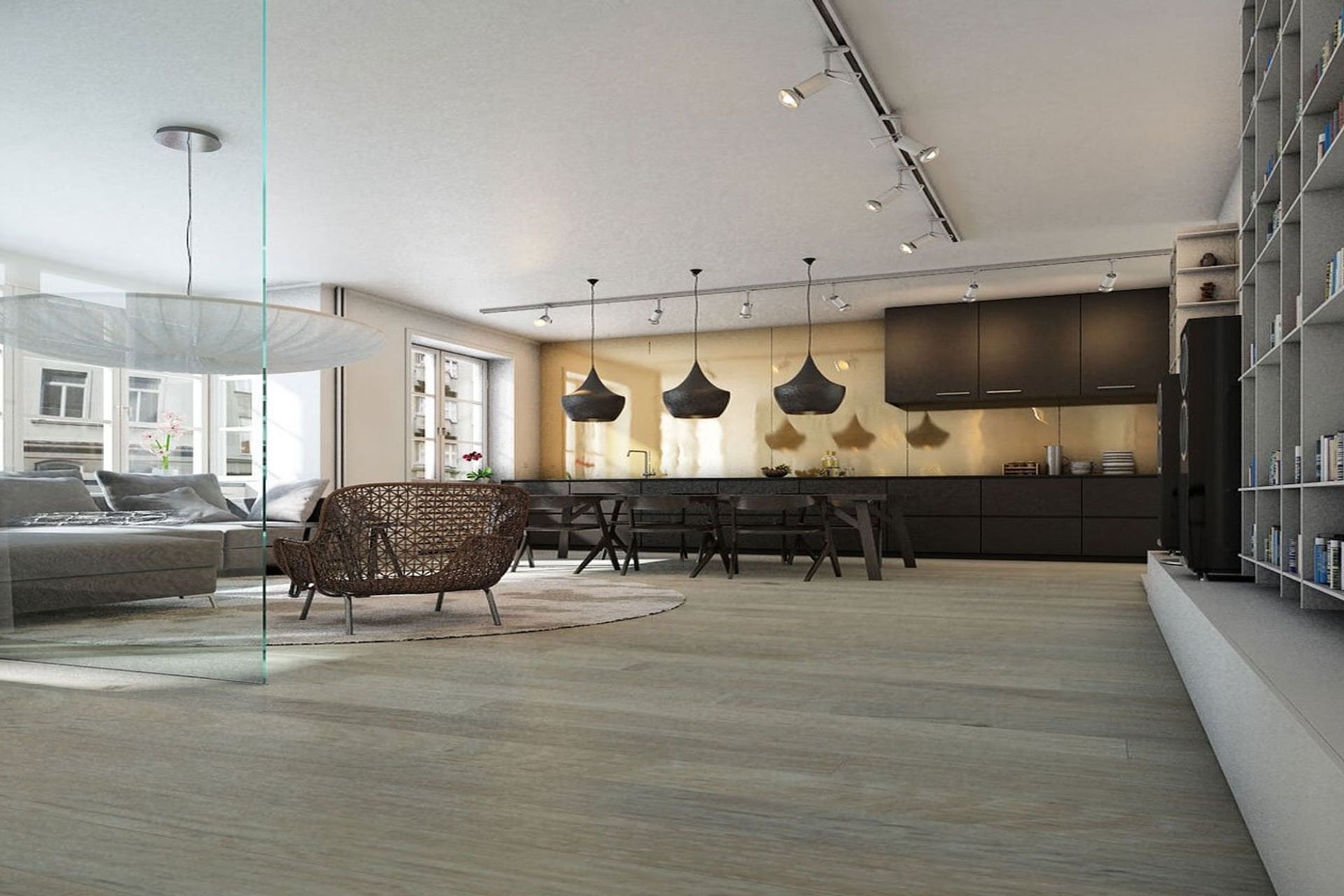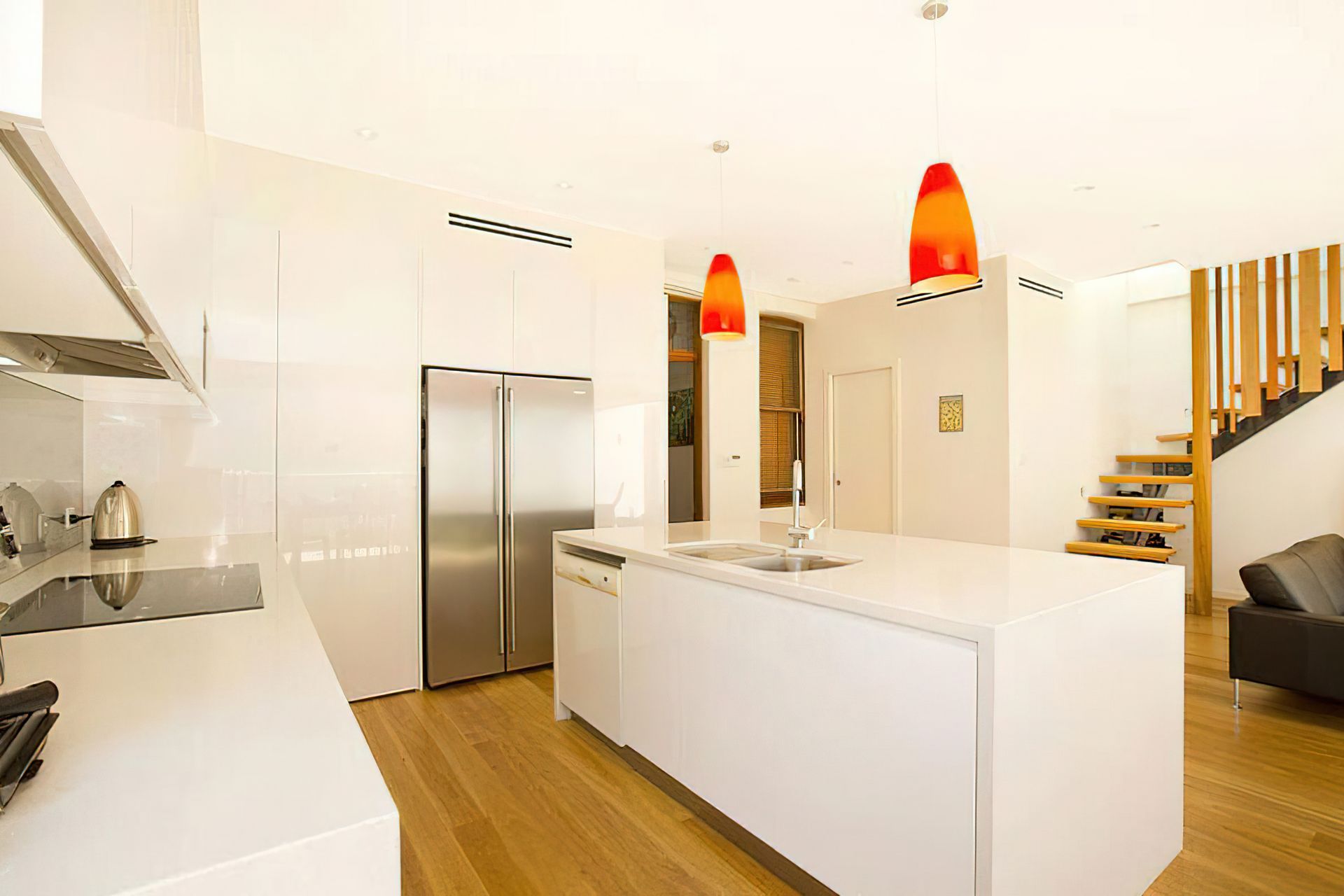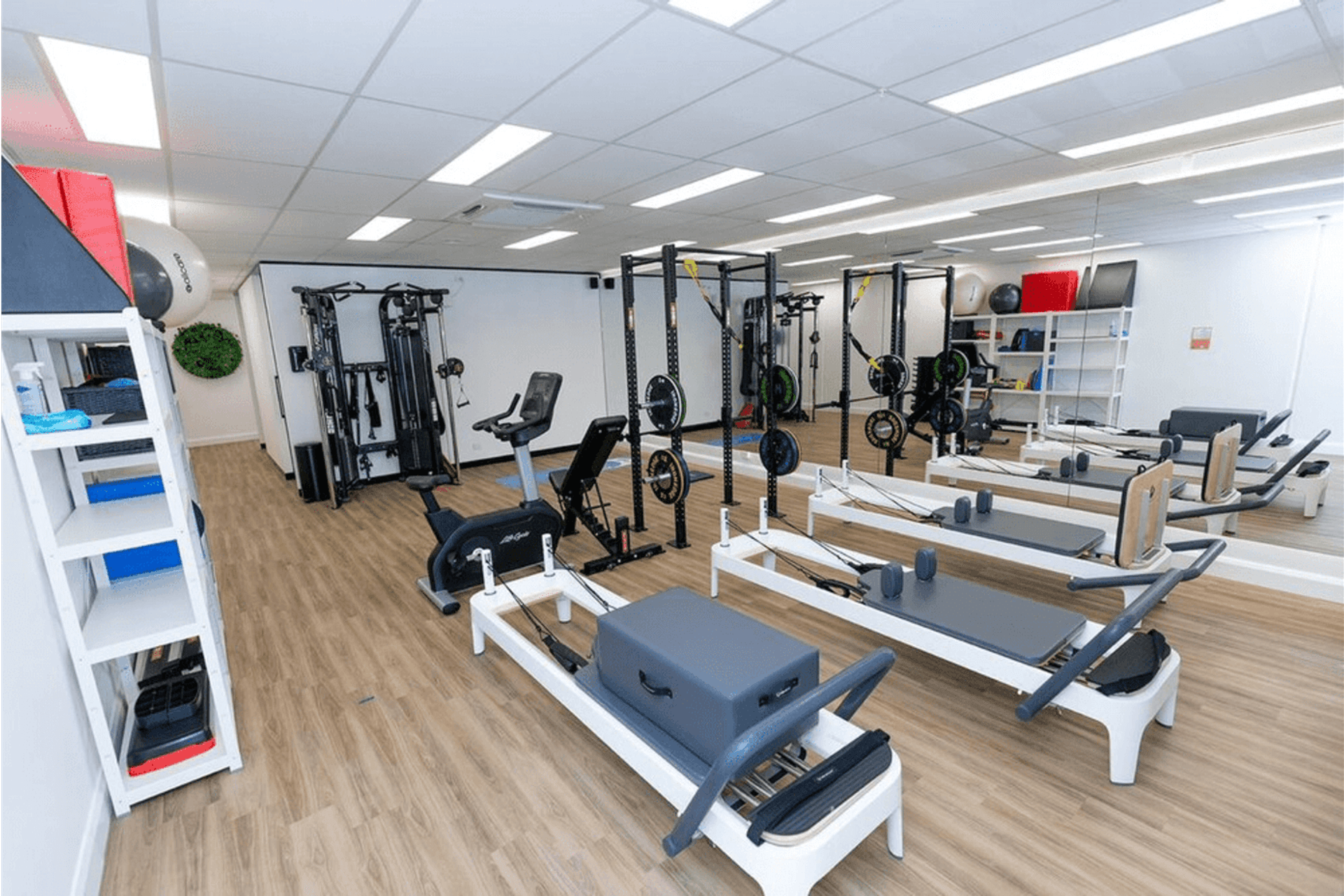Hybrid flooring: Pros, cons, types and applications

Hybrid flooring is an innovative flooring choice that has steadily grown in popularity over the past few years. It is usually composed of two or more materials blended together, giving it distinct properties and some advantages over some of the more traditional flooring choices.
What is hybrid flooring?
Hybrid flooring, as the name suggests, is a fusion of the best vinyl and laminate flooring features. This 'hybrid' creation utilises a diverse array of materials in its build, primarily incorporating polyvinyl chloride (PVC) alongside either wood fibres or limestone powder.
The result is a floor that pairs the aesthetics commonly found in laminate flooring with the enduring resilience and water resistance found in vinyl flooring. In essence, hybrid flooring offers the best of both worlds: an effective blend of beauty, durability, and practicality.

How is hybrid flooring constructed?
Hybrid flooring is constructed with multiple layers, each contributing to the floor's overall performance. Here's a breakdown of how each layer contributes:
- The top layer, also known as the wear layer, provides resistance to scratches and scuffs, helping the floor retain its original appearance over time.
- The layer beneath, known as the design layer, replicated the traditional natural material that the style of the particular hybrid flooring choice replicates, such as a timber or stone floor.
- The core layer, also known as the third layer, is constructed from a durable composite of limestone powder or wood fibres mixed with PVC. This gives the flooring its rigidity, making it resistant to impact and indentation. Additionally, this core layer is responsible for the waterproof nature of hybrid flooring. The specific materials used in this layer determine the category of the hybrid flooring. For instance, if wood is used in the core layer, the flooring falls into the category of wood-plastic composite. Conversely, the flooring is classified as a stone-plastic composite if limestone is used.
- The final bottom layer of most hybrid flooring options is known as the underlay, and this layer is pre-attached to the bottom of the planks to provide sound insulation and comfort underfoot.
What are the pros of hybrid flooring?
As with any flooring, hybrid flooring has distinct properties and numerous pros and cons:
Waterproof properties
Hybrid flooring stands out for its waterproof properties because of the tight click-lock system and the composite core that repels water. This prevents moisture from seeping in, making it suitable for high-humidity areas like bathrooms, kitchens, or laundry rooms or wet areas where spills and splashes are common.
Ease of installation and maintenance
Hybrid flooring is designed for easy installation. Its click-lock system allows for a quick, glue-less installation, significantly reducing labour time and costs. Regarding maintenance, hybrid flooring's rigid top layer resists dirt and dust, which can be simply swept or vacuumed. For a deeper clean, a damp mop is enough.
Stain resistance
The top layer of hybrid flooring is treated with a special coating that makes it highly resistant to different stains, from food and drinks to pet accidents - making it a practical choice for homes with children or pets where spills are frequent.
Versatility and durability
Hybrid flooring can be installed over many existing floors, including concrete, tile, or even vinyl, adding to its versatility. Its durability comes from its multi-layered construction that can resist impacts, scratches, and wear over time. It's also UV-resistant, which prevents it from fading when exposed to sunlight, making it suitable for sunrooms and areas with large windows.

Aesthetic appeal
Hybrid flooring is available in many designs, patterns, and colours. Advanced imaging technology is used to create authentic visuals of wood or stone that add elegance and sophistication to any space. It's possible to achieve the desired look, whether it's rustic, contemporary, or traditional, while also enjoying the benefits of a more durable material.
Comfort
Because of its thick composite core, hybrid flooring offers a softer feel underfoot than traditional hard surfaces like stone or tile. It's also more thermally stable, meaning it doesn't get too cold in the winter or hot in the summer, contributing to the overall comfort of your home.
Sound insulation
The attached underlay in most hybrid flooring offers excellent sound absorption properties. It helps to minimise the sound of foot traffic and other impact noises, which can be particularly beneficial in multi-story buildings or rooms located next to noisy areas.
Affordability
Hybrid flooring provides the aesthetic appeal of high-end materials like hardwood or stone but at a much lower cost. The savings extend beyond the initial purchase price as the easy installation process can reduce labour costs. Its low maintenance requirement also implies potential savings in the long term.

What are the cons of hybrid flooring?
Relative expense compared to traditional flooring
While hybrid flooring is often more affordable than natural hardwood or stone flooring, it tends to be slightly more expensive than traditional vinyl or laminate options due to its enhanced features like waterproofing and increased durability.
Requirement for a flat subfloor
Hybrid flooring requires a flat, smooth, and clean subfloor for installation. Any unevenness or debris on the subfloor can cause instability or uneven flooring wear over time, which may necessitate additional preparation work and expenses before installation.
Limited authenticity compared to natural materials
Despite the advanced imaging techniques used to mimic the look of natural materials, hybrid flooring may lack the unique textures and variations found in real wood or stone. Although it provides a close match, some homeowners might find it less authentic in appearance.
Potential for discolouration
While hybrid flooring is UV resistant, under extreme and constant exposure to sunlight, there is still a potential for discolouration over time. Therefore, it is advisable to use window treatments in rooms with significant sunlight exposure to extend the lifespan of the colour.
Inability to be resanded
Unlike real hardwood flooring, hybrid flooring cannot be sanded down and refinished to remove scratches or other wear. Meaning that damaged planks must be replaced entirely, adding to the maintenance cost over time.
Necessity for thorough cleaning
While routine cleaning of hybrid flooring is relatively simple, a more thorough cleaning is required immediately to prevent permanent staining or damage for spills or stains, Harsh cleaning chemicals should be avoided as they can damage the floor's finish.
Costs of professional installation
Although hybrid flooring is easier to install than other types of flooring, professional installation can still represent a significant portion of the overall cost, especially if subfloor preparation is needed. While it's possible to install hybrid flooring as a DIY project, a professional installer can ensure a correct and efficient installation, which can prolong the floor's life.
Types of hybrid flooring
Now that we’ve covered the general pros and cons of hybrid flooring, we can take a closer look at the two main types, wood plastic composite and stone plastic composite. It’s important to keep in mind that when talking about hybrid flooring, types refer to the specific construction and composition of the flooring, whereas styles pertain to the visual design and appearance.
Wood plastic composite (WPC)
Wood plastic composite (WPC) hybrid flooring is a type of rigid core flooring constructed with a blend of wood fibres, plastic composites, and a foaming agent, resulting in a lightweight yet sturdy and water-resistant core. Topped with a decorative layer that mimics wood or stone and a protective wear layer, it offers both aesthetic appeal and durability. WPC hybrid flooring is a versatile option for various interior spaces.

What settings are wood plastic composite floors used in?
Wood plastic composite floors are popular in numerous residential settings, such as:
- Living rooms: WPC flooring is used a lot in living rooms due to its durability and visual appeal. It can withstand the regular foot traffic, making it suitable for active family spaces.
- Kitchens: WPC flooring's water resistance and easy maintenance make it well-suited for kitchens, providing a practical solution that can handle spills, splashes, and the high moisture levels often present in cooking areas.
- Bathrooms: Similar to why WPC is a good choice for kitchens, its water resistance and resilience to humidity make it a suitable flooring option for bathrooms
- Basements: WPC flooring's resistance to moisture makes it an ideal choice for basements, providing a reliable and water-resistant surface that can withstand the unique challenges that basements present.
Stone plastic composite (SPC)
Stone plastic composite (SPC) hybrid flooring features a rigid core made from a blend of stone powder, typically limestone, and PVC, providing exceptional stability and impact resistance. This waterproof core is topped with a decorative layer that realistically mimics wood, stone, or tile, and a protective wear layer for durability against scratches and daily wear. SPC flooring is a robust and low-maintenance choice, suitable for various residential and commercial applications.

Which settings are stone plastic composite floors used in?
For the same reasons we mentioned above, SPC flooring is a popular choice for living areas, kitchens, bathrooms, and basements. But unlike SPC is also a popular choice for commercial settings due to it being more rigid and dense compared to WPC. Meaning it's better suited to withstand heavy foot traffic, furniture movement and other demands of commercial environments.
Some of the common commercial environments SPC flooring can be found include:
- Retail spaces: SPC flooring is often used in retail environments such as boutiques, stores, and shopping centres due to its durability, ease of maintenance, and attractive design options.
- Offices: SPC flooring is suitable for office spaces, providing a durable and stylish flooring solution that can withstand the demands of a professional setting.
- Hospitality venues: SPC flooring is used in hotels, resorts, and other hospitality venues due to its resilience, water resistance, and aesthetic versatility.
- Gyms and fitness centres: SPC flooring's durability and impact resistance make it suitable for gyms and fitness centres, where it can withstand heavy equipment and high-intensity workouts.
Frequently asked questions about hybrid flooring
Are hybrid floors durable?
Yes, hybrid floors are exceptionally durable. They are designed to withstand heavy foot traffic and resist impacts, scratches, and even UV light. The multi-layered construction contributes to their longevity, making them a smart choice for busy households.
How is hybrid flooring installed? Can I install it myself, or do I need professional installation?
Installing hybrid flooring can be done by both professionals and DIY enthusiasts. The hybrid flooring installation process includes acclimation, subfloor preparation, layout planning, cutting planks, connecting them using a click-lock or tongue-and-groove mechanism, adding trim, and finishing touches. Whether you choose to install it yourself or hire a professional, it is crucial to follow the manufacturer's instructions for specific guidance during the installation process of hybrid flooring.
Is hybrid flooring better than timber flooring?
While timber floors offer natural beauty and warmth, they require regular maintenance and are vulnerable to scratches, stains, and water damage. Hybrid flooring, on the other hand, is waterproof, highly durable, and stain-resistant. It mimics the look of natural timber flooring but is easier to maintain and typically more affordable.
Is hybrid flooring easy to clean?
Cleaning hybrid floors is nice and easy. Routine sweeping or vacuuming is usually sufficient for daily upkeep. A damp mop with a mild cleaner is typically all you need for spills or stains. Remember, cleaning up any spills quickly is essential to avoid potential staining or damage.
Does hybrid flooring require a flat subfloor?
Hybrid flooring does require a flat and clean subfloor for optimal installation. Any unevenness or debris on the subfloor can lead to issues like instability or uneven wear on the flooring over time. It's often worth getting your subfloor professionally prepared to ensure the best outcome.
Is hybrid flooring appropriate for use in kitchens and bathrooms?
Hybrid flooring is waterproof, so it's an excellent choice for kitchens, bathrooms, or other areas prone to moisture or spills. However, like with any flooring, cleaning up spills is important to avoid slipping hazards.
Is hybrid flooring suitable for households with pets?
Yes, hybrid flooring is an excellent choice for households with pets. It is highly resistant to scratches and stains, and its waterproof nature means that you can easily clean up any pet accidents without causing damage. However, as with any flooring, it's best to keep pet nails trimmed to avoid potential scratching.
A flexible, durable flooring option to consider
As you can see, hybrid flooring is a highly durable and flexible flooring option that is suitable for both residential and commercial settings. It's easy to clean and relatively simple to install, making it a popular choice among homeowners and business owners alike. Additionally, it comes in a wide variety of styles that blend seamlessly into modern interior design schemes, so it's well worth considering as an option when the time comes to replace or install a new floor.
Related article: Vinyl flooring price in Australia: A 2024 breakdown
